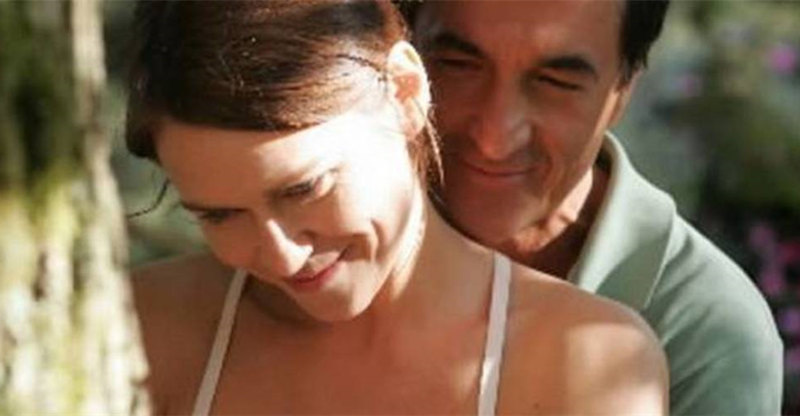Tiffany Shlain’s documentary “Connected” (2011) is a bit of a trap. The free-associative narrative structure begs to be criticized for its lack of focus, for its potpourri of subject matter, but Shlain’s response might well be, “That’s just your left hemisphere talking.”
In a movie somewhat misleadingly packaged as an examination of the effects of digital interconnectivity, Shlain relies heavily on the work of her father, neurologist and author Leonard Shlain, who mines history for patterns that reflected the brain’s structure. For him the innovation of the alphabet soon led to the dominance of left hemisphere thinking, and a resultant patriarchal society that valued analytical thought, seeking to break problems into distinct parts and solve each of them with little concern for a more holistic outlook. However, the advent of photography and the subsequent proliferation of visual media (the “iconic revolution”) has more recently begun to stimulate right hemisphere thinking. Ms. Shlain believes the ever-increasing interconnectivity of the digital information age encourages integration of the two hemispheres, which is supposed to be more egalitarian for largely unspecified reasons.
Leonard Shlain also encouraged his daughter to look for patterns and she has done so with gusto, a sure indication that you need to dust off your baloney detector kit. Anyone looking for a pattern will find one, especially if that person begins with the assumption that “everything is so intertwined.” Flipping the bird to left hemisphere hegemony, Ms. Shlain adopts the trappings of standard documentary with a narrator (Peter Coyote) and historical timeline-style graphics then gleefully abandons their implied organizational logic for a hyperlinked surfing safari.
The film flits from subject to subject with little warning or explanation: first it’s the Webby Awards (which Ms. Shlain founded), then the Holocaust, disappearing honeybees, the director’s first time driving alone, Marshall McLuhan, and then back to the bees again, all of which is accompanied by a rapid-fire montage of barley related images culled from old movies and commercials (an iconic assault). And then the bees again. Always with the bees. A hazy through-line eventually wavers into view, but mostly it’s catch-as-catch-can; when everything is connected, any thought can lead to any other.
“Connected” erases the dividing line between the personal and the universal. The earliest sequences prepare us for a documentary about our increasing dependence on the Internet, but Ms. Shlain is every bit as interested in examining her relationship with her father, her very own super-hero who, as filming begins, struggles with a terminal cancer diagnosis. Their movie succeeds as an intimate family portrait, but its speculations about technology and philosophy are less convincing. Perhaps it’s too left hemisphere to ask for evidence or to be skeptical about which connections are real and which ones are just perceived, but our poor little brains just aren’t very good at sifting through unfiltered data without much-needed fact-checking to contest our multiple biases. Some of the claims in the film might be true, some might not; many are so broad as to be unfalsifiable and therefore of dubious value. Sorry, left hemisphere acting up again.
Both Ms. Shlain and her father share a utopian outlook on where the great information revolution is taking us all. Leonard has a pet theory that Leonardo Da Vinci’s genius was attributable to the successful integration of his brain’s hemispheres, so if the Internet is encouraging us to do the same, perhaps we’re evolving into a race of Da Vincis. I think it’s vastly more likely we’ll continue to streamline methods for sharing cat videos, but I am definitely not the right person to ask. I’m still sticking to my prediction that the whole mobile Internet fad will pass any day now. Where Ms. Shlain celebrates the supposed ways in which our brains now think interdependently, the thought of assimilation into the hive mind (damn bees) stokes my fear that “Invasion of the Body Snatchers” (either version) was really just a documentary a few years ahead of its time.
Video:
The film is presented in a 1.85:1 aspect ratio. The interlaced SD transfer from Docurama is solid enough with no noticeable weaknesses.
Audio:
The 5.1 Dolby Digital surround track is free of any distortion and all dialogue is mixed clearly. The sound design is fairly straightforward. Optional English and Spanish subtitles support the English audio.
Extras:
The disc includes two short films directed by Tiffany Shlain.
“A Declaration of Interdependence” (4 min.) is a crowdsourced short film in which participants from across the globe uploaded videos of themselves reading bits the titular document lauding interdependence. This short edits together snippets from dozens of these videos and was uploaded on July 4, 2011. It made me shudder.
“Yelp: With Apologies to Allen Ginsberg” (3 min.) takes up the other point-of-view, parodying Ginsberg’s howl by observing the way the “best minds” of our generations are being fried by the grid. Shlain is not shy about harboring contradictory ideas, and encourages folks to unplug every now and then. But what if you miss out on something really important on Twitter?
Film Value:
Perhaps “Connected” will speak to you more than it does to me if your answer to the question “Have you ever faked going to the rest room to check your e-mail?” is “Been there, done that” instead of “You people are all freaking insane and I’m just going to move to my cabin in the wilderness until the massive EMP sets us all free.” The film’s helter-skelter structure is a conscious decision, not a mistake or evidence of laziness. I just didn’t connect with it.


